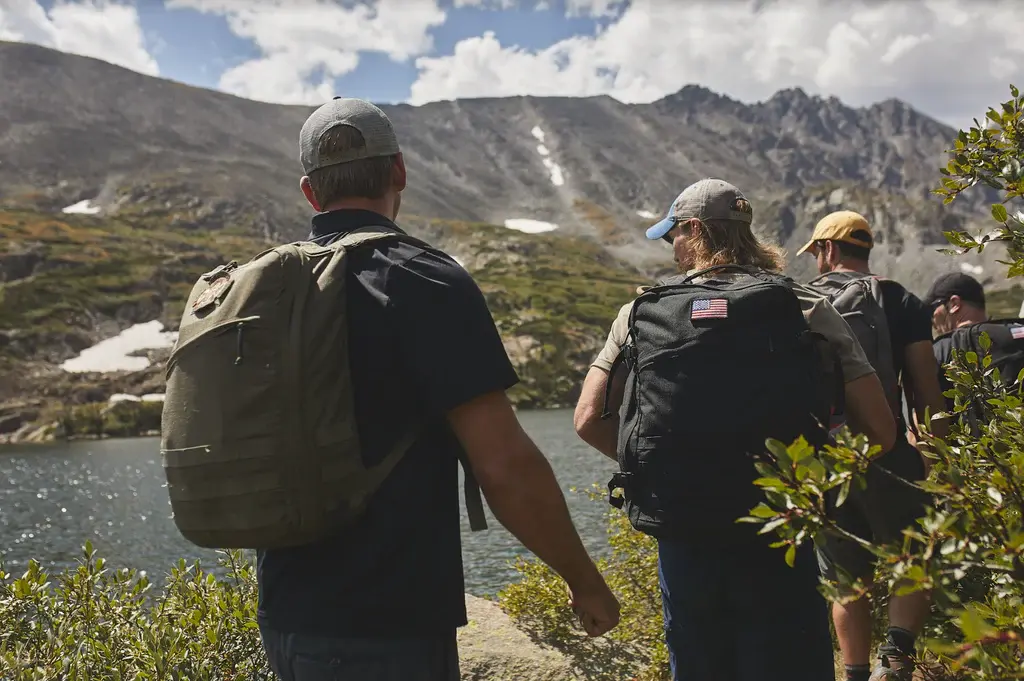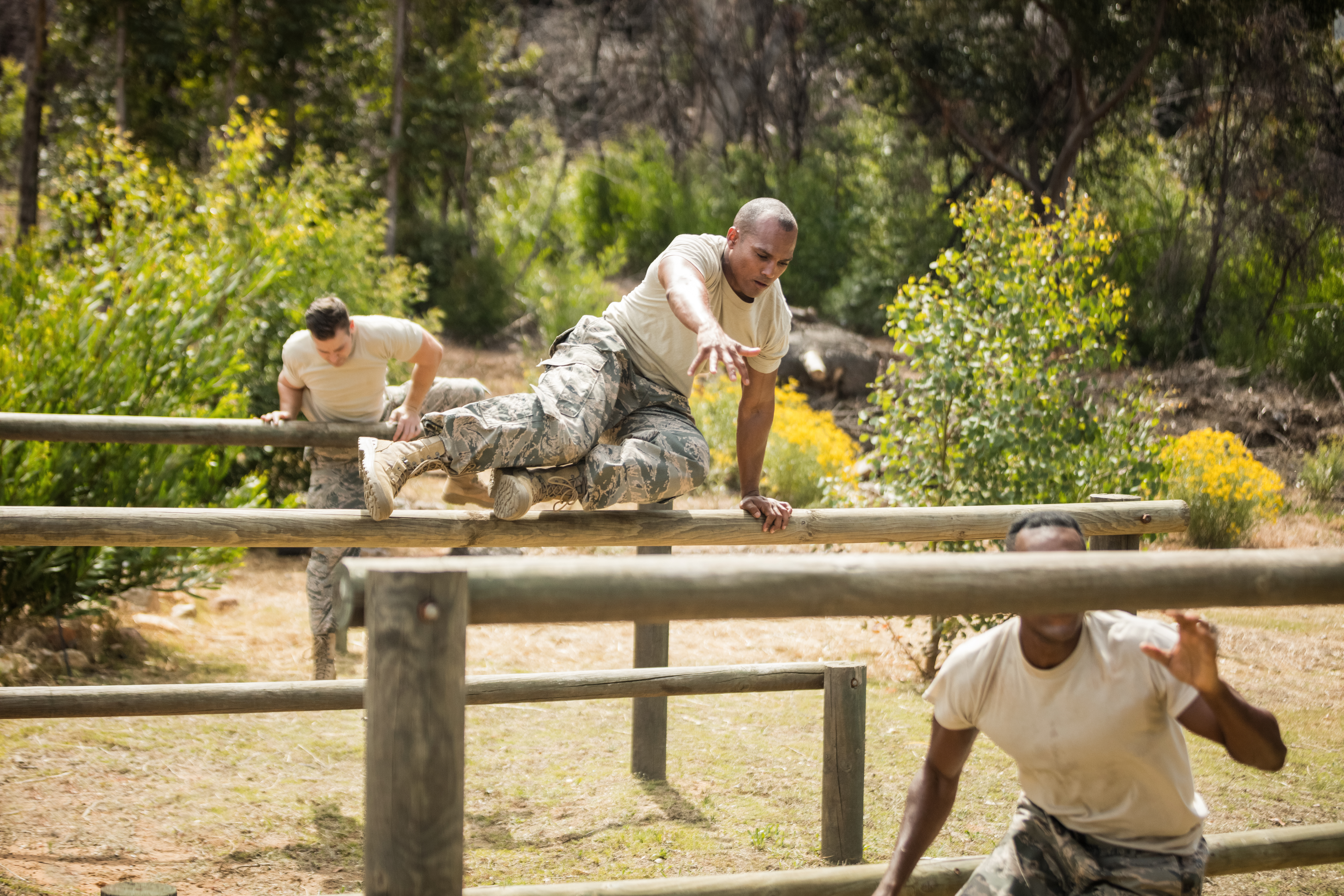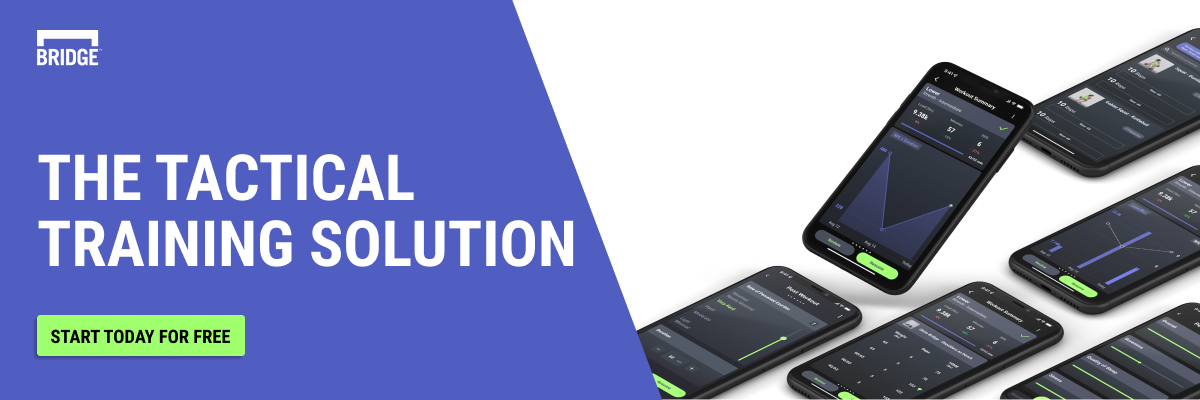Professionals Get Paid, Winners Practice, & Masters Refine
The views expressed are those of the author and do not necessarily reflect the policy or the position of the Department of the Air Force, the Department of the Army, the Department of Defense, or the United States Government.
Tactical “Professionals” get paid to be fit enough to train, practice, or rehearse their essential job functions in such a way and with such intensity & frequency so they will be able to perform those functions when they are called upon to make a difference. If you’re a weapon carrier, a casualty treater, or an equipment mover – you better be able to provide your service in a useful way.
Being a professional means little. Refining your craft with intentional practice means everything.
As such, it is my professional opinion (a very strong personal one as well), that S&C coaches embedded in “Tactical” units should be “soft experts” in the application of manpower and skill in that unit – and all other Human Performance personnel, to be quite honest. This doesn’t mean you need to be able to clear a room, drive a tank, or conduct airlift operations, but it does mean you need to get intimate with those “end state” actions and the auxiliary mini tasks if you’re supporting humans who are paid to do those things.
It is important to understand these functions so you can provide your service in a useful and responsive manner. It is also important to understand the written instructions that describe those tasks and the process in which they are trained.
This means you can (and should) establish principles in your program that support the development of those skills within the structure that has been described by those guiding instructions. The coolest part of this problem is that much of your development can come in the form of practice, rehearsal, and refinement of the complete tactical training process led by the trainees themselves. This is why I love the tactical space so much. We are in the business of education toward personal autonomy and self-efficacy.
Application Part I
There are hundreds (LITERALLY SO MANY) of ways to apply this type of specificity and I think the most ignorant way to accomplish it is to wear “kit” (protective equipment, vest, helmet, etc) in the weight room. I’ll contradict myself here in a second, but if you are asking your team members to wear their gear while conducting general strength training with traditional implements (barbells, namely), you are robbing results to pay novelty. Allow the tool to do the job for which you bought it.
I think a much better use of “specificity” in traditional S&C settings is to find opportunities to enhance general training. The starting point for me, and those I’ve supported, is to start wearing kit and helmet during the warmup. This is best used after the general movement patterns have been sufficiently accomplished unloaded and with the desired speed.
Once you add external load, begin slowly and build up speed. Do not be afraid of incorporating things like crawls, rolls, and even deliberate falls. This is a GREAT time to learn to fail in a low-risk environment. Then you take off the kit and train. Once sufficient group performance has been achieved, you can begin using kit and helmet during sprints, plyometrics, and other bodyweight power type activities – after they have been used unloaded. This is also a great way to begin to develop more robust bones and connective tissues to a greater degree than strength training alone.
The final piece of adding this type of loading in to “general” training would be use low-risk implements like kettlebells, dumbbells, or even objects like ammo cans or other equipment that may be used in their occupation to conduct circuits with controlled work/rest cycles that build in physiological load over time toward those expected in service to about +10%, if feasible. Think 15-20min at Zone 2/3 of the 5-Zone model.
What I see most often is an hour at Zone 5 because not only is more better, dumber is also usually better. Actually, it is not. Better is better. My last note here would be to consider frequency and intensity as your friend and volume as your enemy. It is my opinion that volume should be built over a week rather than a day.
Application Part II
This is where the magic happens - a strategic and comprehensive approach to program development, educational modeling, and fostering a strong culture. It's the ultimate goal in the realm of physical development for tactical skills - when unit leaders are able to pinpoint areas where their personnel may be lacking, recognize the need for physical training (aka practice), and actively seek out subject matter experts to elevate their existing training programs.
The next best situation would be where you, the performance expert, can persuade them that using their natural training process to enhance physical performance is a viable situation to become involved with.
Just like most sports, practice is where tremendous amounts of valuable fitness can be manufactured. To get better at the thing, you just do the thing! If you can layer in general training meant to supplement practice, you have a robust recipe to develop technical mastery and the ability to maintain that mastery in the face of fatigue, stress, and the unknown. What is even cooler is the training described in Part I of the application process can be used to bridge those who are underdeveloped into a place where they can be more capable of handling rehearsal without breaking.
Think of it as off-season and pre-season/in-season. If you have presented your team members with useful and practical human performance education and training modalities, they will begin to understand how to break down their tasks in the organizational language of performance and easily want to include the coaches into the process.
I have been successful in facilitating this training model with active-duty units as we move toward a deployment or large training exercise. Giving ground to traditional S&C training and supporting their foundational and functional skill building has resulted in unit and individual awards at all levels.
An example of a ‘foundational’ skill a combat specialty would be individual movements such as running (rushing) in gear, navigating simple obstacles, or getting down to the ground and/or into a shooting position. “Functional” skills in this context would be combining the foundational skills, either individually or in teams, to accomplish a specific goal. That goal may be as simple as moving from Point A to Point B, either as quickly or covertly as possible, or more highly integrated skills such as reacting to an ambush or capturing an objective point.
I’m only comfortable in claiming causation here because I used the same model when I was an NCO who was responsible for training dozens of junior members to accomplish basic and complex physical tasks centered around a base of being able to shoot, move, and communicate. This type of training can be done apart from general S&C or before/after a training session. I am a fan of doing your tactical training first and then hitting a low-volume strength/power session with some accessory work intended on two things:
- Exposing commonly overused muscle groups to necessary workloads
- Incorporating movement skills that are usually lacking in these populations.
Some, but not all, include the ability to hinge, brace, extend the thoracic spine, flex the ankles, and rotate the neck. Aside from those inclusions, the most important thing about these sessions is the building of tactical skill beginning at the individual level and progressing toward large-unit synchronization across teams. All the weight room training in the world will never replicate training hard, under fatigue, with movement skills that have been intentionally rehearsed to the point of automaticity. Let the leaders lead and support their process. Understand the tasks, but don’t claim an expert.
Experiential Learning Cycle
As these “foundational” and “functional” training sessions are developed, it is important to understand what is referred to here as the “Experiential Learning Cycle”. By providing this framework to the process, the collaborative learning environment may be structured in a way that can limit extraneous information that may be inhibitory to learning the skills being trained.
Extraneous information may be the sensations of fatigue, under-fueling, excessive noise not conducive to the context of training, or simply information overload. To effectively manage these sessions, it is important to tap into the existing knowledge and introduce no more than three new pieces of information per iteration. By incorporating repetition that helps participants focus on and connect the new information with what they already know, you can optimize the learning experience. This is where you must rely on the tactical leaders to be aware of the knowledge, skills, and attitudes (KSA’s) of their team.
Once informed by the pre-existing KSA’s and structured following existing, such as United States Air Force Career Field Education and Training Plans (CFETP’s) or unit standard operating procedures (SOP’s), the Experiential Learning Cycle can progress uninhibited by extraneous information. The four constituent elements of the cycles are:
- Act/Iterate
- Reflect/After Action Report
- Conceptualization/Schema Formation
- Refined Application
The cycle itself is straightforward.
Act – Put action toward rehearsal where it is necessary at the intersection of pre-existing knowledge and a few pieces of new and necessary information.
Reflect – Provide ACTIONABLE feedback and highlight common misconceptions to those in attendance to shape future execution. Document those elements of feedback for more continuous improvement.
Conceptualize – Provide real-world examples where mastery can lead to success or non-mastery can lead to catastrophe and allow learners to usable bits.
Refined Application – Re-attack to allow the learners to attend to the new information, act through the improved process, and possibly cement what was already successful.
A last piece I would add to this is to allow a “safe” place to fail, when and where appropriate. It is important to provide context to dire consequences, but it is also important to provide those in attendance the grace to fail – there will be failure. These steps are for the stakeholders to execute. But providing intelligent consultation is a must.
Again, this process is informed and led by the native leaders within the unit. The role of the Human Performance practitioner here is to serve as a resource for consultation rather than primary planning and development of these training iterations. Where and how these concepts fit into the daily, weekly, quarterly, or annual calendar should be a collaboration of all stakeholders in all aspects of tactical and performance development.
By using this article and the elements provided as a guide, the Human Performance pros can hopefully expedite this process by gaining requisite familiarity and credibility within the operational capacities of a particular team or unit. By providing three possible (and feasible) well-informed courses of action in planning meetings/discussions, remaining flexible to the unit’s needs, and understanding the SUPPORT role Human Performance teams play in the development of warfighters, I believe you can increase your standing within the unit, drive lasting buy-in, and become a transformational force within any organization you are privileged to support.
About the Author

JD Mata is a 10-year United States Air Force veteran with multiple deployments supporting Operations Iraqi and Enduring Freedom, as well as Combined Joint Task Force – Horn of Africa. Following his honorable discharge in 2014, he has been involved in Strength & Conditioning as a coach and researcher in the military, law-enforcement, college, pro, and Olympic human performance communities which has resulted in multiple peer-reviewed scientific journal articles. Over that time, JD has amassed 19 years of experience in the general and specific development of tactical and athletic skills that contribute to success and survivability in competition and in life. Now pursuing his PhD, JD spends his free time exploring nature with his dog Lex, playing recreational sports, training for the sport of Olympic weightlifting, and enjoying watching his three beautiful nieces growing into strong, confident young women.
Related Posts

Exploring the Benefits of Retro-Walking...
Retro-walking (RW), or walking backward, is a therapeutic exercise used in resistance training...

A Preparatory Training Approach To...
Rucking and load support in full kit is an activity that many Tactical Human Performance teams will...

Conditioning Protocols for Law...
Strength and conditioning programs designed for law enforcement officers can overexert the...



